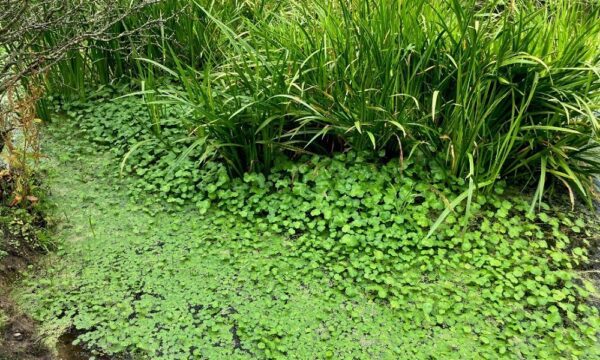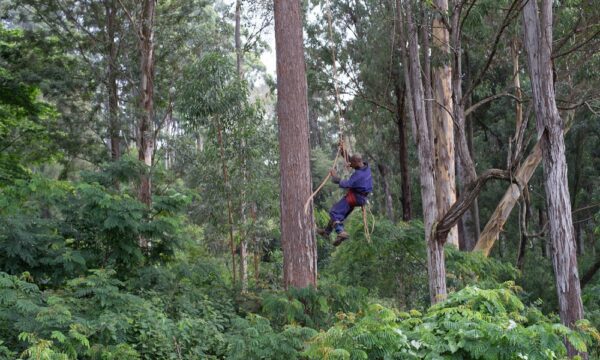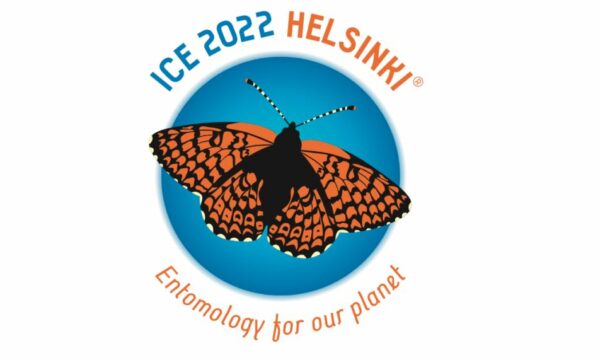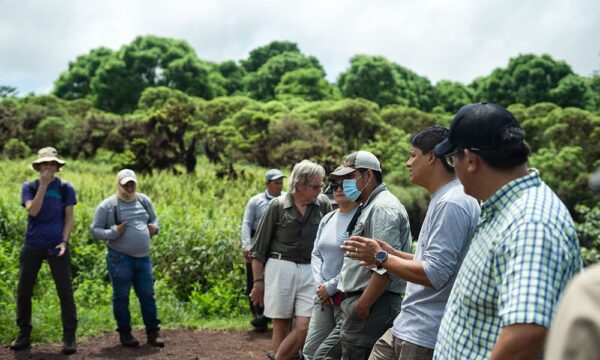1 September 2015 – The Galapagos National Park Directorate (GNPD) is partnering with CABI and the Charles Darwin Foundation (CDF) to help protect the iconic Galapagos Islands from an invasive blackberry (Rubus niveus). This non-native plant was introduced in 1968 and is causing serious problems for local biodiversity and agriculture. It is now considered one of the worst weeds affecting the islands. Dense spiny thickets of blackberry can grow up to three metres tall, turning agricultural areas into wasteland and preventing the unique native forest dominated by the endemic daisy tree from regenerating.
Since the Galapagos Islands were discovered in the 16th century, humans have introduced many species of plants and animals. Some species have become invasive such as this species of blackberry, which has now invaded most of the wetter parts of the islands and has been estimated to cover more than 30,000 hectares – over 25,000 football (soccer) pitches. At present, control is a mixture of manual labour and herbicide application, but the blackberry’s fast growth and large seedbank make these methods expensive, labour intensive and, ultimately, not very successful. This has led to heavy and regular use of herbicides or land abandonment. Herbicide and manual control may also be indirectly affecting the nesting success of local birds.
With initial funding from FEIG (Fondo para el control de las especies invasoras de Galápagos) – a trust fund set up to manage invasive species problems in the archipelago – CABI has started work to identify suitable biological control agents for the blackberry.
Classical biological control (or biocontrol) is used worldwide in the battle against widely-distributed non-native invasive species, such as weeds. This method uses living organisms – natural enemies of the invasive species such as insects and diseases – from the native range of the invasive species. A biological control agent is selected that only attacks the invasive or target species, weakening it and reducing its impact.
A successful biological control agent will keep the invasive plant in check on all sites where present and, importantly, keep the costs of controlling the blackberry significantly lower. It will not only reduce the cost of management for farmers and the GNPD, but also allow the recovery of native vegetation and its associated wildlife, and the subsequent release of agricultural areas so that cultivation can be resumed.
At present, CABI scientists are searching for potential biocontrol agents from the native range of the blackberry (India to China), as well as defining more precisely the exact origin of the plants introduced to Galapagos using genetic markers.
If a suitable agent is found, additional funding will allow for a rigorous 3-5 year testing process to be undertaken. This will ensure that the biocontrol agent for blackberry poses no risk to native, non-target species, as well as related cultivated species like the commercial Andean blackberry on mainland Ecuador, and ornamental roses grown for export.
Biological control isn’t new to Galapagos: a previous project that introduced the Australian ladybug to control the cottony cushion scale was highly successful. It is hoped that this project will be just as successful.
Dr Carol Ellison, Senior Plant Pathologist, Invasive Species Management at CABI and lead scientist working on this project, has just returned from a meeting in Galapagos that was organized by CDF. Here, she met with representatives from the major institutions who are responsible for facilitating the project as well as representatives of the farming community:
“I am delighted to be part of this exciting project to help reduce the massive impact that Rubus niveus is having on the unique native vegetation and farmland on these amazing islands. I was shocked to see just how tall and dense Rubus niveus was growing on Santa Cruz Island. I had previously only seen it growing in its native range, in Asia, where it reaches a fraction of the height and density. My hope is that we can achieve this diminutive status on the Galapagos, using one or more of the many natural enemies that we found damaging it in India and China.”
For all our latest news, click here.
Related News & Blogs




